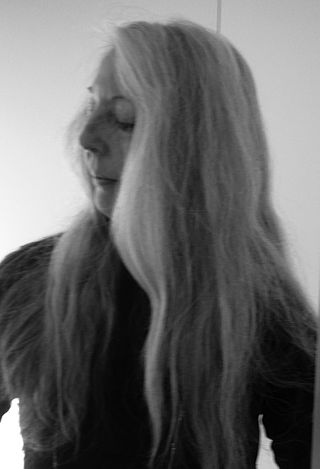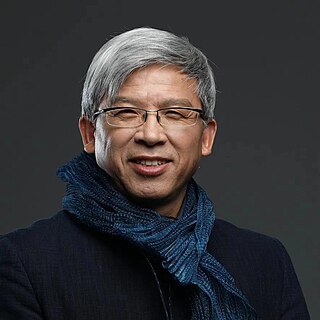
The Silk Road was a network of Eurasian trade routes active from the second century BCE until the mid-15th century. Spanning over 6,400 kilometers, it played a central role in facilitating economic, cultural, political, and religious interactions between the East and West. The name "Silk Road", first coined in the late 19th century, has fallen into disuse among some modern historians in favor of Silk Routes, on the grounds that it more accurately describes the intricate web of land and sea routes connecting Central, East, South, Southeast, and West Asia, East Africa, and Southern Europe.

Hangzhou, also romanized as Hangchow, is the capital and most populous city of Zhejiang, China. It is located in the northwestern part of the province, sitting at the head of Hangzhou Bay, which separates Shanghai and Ningbo. Hangzhou grew to prominence as the southern terminus of the Grand Canal and has been one of China's most renowned and prosperous cities for much of the last millennium. It is a major economic and e-commerce hub within China, and the second biggest city in the Yangtze Delta after Shanghai. Hangzhou is classified as a sub-provincial city and forms the core of the Hangzhou metropolitan area, the fourth-largest in China after Guangzhou-Shenzhen Pearl River agglomeration, Shanghai-Suzhou-Wuxi-Changzhou conurbation and Beijing. As of 2019, the Hangzhou metropolitan area was estimated to produce a gross metropolitan product (nominal) of 3.2 trillion yuan, making it larger than the economy of Nigeria. As of the 2020 Chinese census, it had a total population of 11,936,010 inhabitants. However, its metropolitan area, populated by 13.035 million people over an area of 8,107.9 km2 (3,130.5 sq mi), consists of all urban districts in Hangzhou and 3 urban districts of the city of Shaoxing.

Huzhou is a prefecture-level city in northern Zhejiang province. Lying south of the Lake Tai, it borders Jiaxing to the east, Hangzhou to the south, and the provinces of Anhui and Jiangsu to the west and north respectively. As of the 2020 census, its population was 3,367,579 inhabitants, of whom 1,015,937 lived in the built-up area made of Wuxing District as Nanxun District is not being conurbated yet.
Stephen Frederick Starr is an American expert on Russian and Eurasian affairs, a musician, and a former president of Oberlin College.

is a county-level city in Zhejiang Province, China, and under the jurisdiction of Jiaxing. It is in the south side of Yangtze River Delta, and in the north of Zhejiang. It is 125 km (78 mi) to the southwest of central Shanghai, and 61.5 km (38.2 mi) east of Hangzhou, the provincial capital. To its south lies the Qiantang River. The city has a land area of 700.5 km2 (270.5 sq mi) and as of the 2020 census, had a population of 1,076,199 inhabitants. Haining is known for its leather industry and spectacular tide in the Qiantang River. Since June 2021, it's linked to Hangzhou by the new suburban Hangzhou - Haining subway Line.
The Quilt Index is a searchable database for scholars, quilters and educators featuring over 50,000 quilts from documentation projects, museums, libraries, and private collections. It also has quilt-related ephemera and curated essays and lesson plans for teachers.

The International Dunhuang Project (IDP) is an international collaborative effort to conserve, catalogue and digitise manuscripts, printed texts, paintings, textiles and artefacts from the Mogao caves at the Western Chinese city of Dunhuang and various other archaeological sites at the eastern end of the Silk Road. The project was established by the British Library in 1994, and now includes twenty-two institutions in twelve countries. As of 18 February 2021 the online IDP database comprised 143,290 catalogue entries and 538,821 images. Most of the manuscripts in the IDP database are texts written in Chinese, but more than fifteen different scripts and languages are represented, including Brahmi, Kharosthi, Khotanese, Sanskrit, Tangut, Tibetan, Tocharian and Old Uyghur.

Music archaeology is an interdisciplinary field of study that combines musicology and archaeology. As it includes the study of music from various cultures, it is often considered to be a subfield of ethnomusicology.

Marianne Mittelholzer, artist name Mascha Mioni is a Swiss painter and textile artist. Her best known creations are in the area of art to wear, the design of garments as an object of art, and wearable art.

A textile conservator is a conservator-restorer charged with the care, treatment, research, and preservation of textiles. Issues addressed by a textile conservator are generally related to the field of textile preservation, and include damage caused to textiles by: light, mold and mildew, insects, cleaning, surface cleaning, washing, mounting for display, and storage. Variations in textile types and "the diversity of the textile conservator's work makes it a very rewarding profession". Textiles are among the most fragile artifacts, as they are susceptible to damage from atmospheric pollutants, moisture, biological organisms, and environmental changes and care varies with size, shape, material, and condition issues, all of which a textile conservator must be well versed.

Yoshiko Iwamoto Wada is a Japanese textile artist, curator, art historian, scholar, professor, and author. She has received international recognition for her scholarship and expertise in the field of textile art. In 2010, she was named a "Distinguished Craft Educator - Master of Medium" by the James Renwick Alliance of the Smithsonian Institution, who stated: "she is single-handedly responsible for introducing the art of Japanese shibori to this country". In 2016 she received the George Hewitt Myers Award for Lifetime Achievement.

Chinese patchwork is a traditional form of Chinese needlework which has been widely circulated in Chinese folk arts. In China, patchwork has been used for millennia.
Silk Road Numismatics is a special field within Silk Road studies and within numismatics. It is particularly important because it covers a part of the world where history is not always clear – either because the historical record is incomplete or is contested. For example, numismatics has played a central role in determining the chronology of the Kushan kings.
Silk Road Fashion is an interdisciplinary research project whose purpose is to investigate communication through clothing during the 1st millennium BC in East Central Asia. Understanding is sought about technology and body understanding, social structures, resource availability, economic history, and trade routes in East Central Asia from ca. 1200 BC to 300 AD. The project is one component of the "Language of Objects" priority funding category of the German Federal Ministry of Education and Research.

ACM SIGHPC is the Association for Computing Machinery's Special Interest Group on High Performance Computing, an international community of students, faculty, researchers, and practitioners working on research and in professional practice related to supercomputing, high-end computers, and cluster computing. The organization co-sponsors international conferences related to high performance and scientific computing, including: SC, the International Conference for High Performance Computing, Networking, Storage and Analysis; the Platform for Advanced Scientific Computing (PASC) Conference; Practice and Experience in Advanced Research Computing (PEARC); and PPoPP, the Symposium on Principles and Practice of Parallel Programming.
Helen Kay Wang is an English sinologist and translator. She works as curator of East Asian Money at the British Museum in London. She has also published a number of literary translations from Chinese, including an award-winning translation of a Chinese children's book.

The China National Silk Museum is a national-level museum in Hangzhou, Zhejiang province, China.

Dr. Zhao Feng is a Chinese textile specialist with a special interest in Silk Road textiles. Dr. ZHAO has been devoted to working in China National Silk Museum for more than 30 years, and become the Director of China National Silk Museum (NSM) since 2009. His research interests mainly focus on interdisciplinary research on textiles and cultural exchange along the Silk Roads. In his tenure, he has transformed the NSM into a leading center for the preservation, study, and appreciation of silk as a significant art medium, and has developed the museum as a “research-oriented, conservation-cycled, international-targeted and fashion-conscious ” institution.

The Iron and Steel Institute of Thailand (ISIT) is a not-for-profit entity under the Foundation for Industrial Development (FID), which itself falls under the Ministry of Industry (Thailand).

Mary Zicafoose is an American textile artist, weaver, and teacher who specializes in ikat, an ancient technique in which threads are wrapped, tied and resist-dyed before weaving. Zicafoose is the author of Ikat: The Essential Handbook to Weaving Resist-Dyed Cloth (2020). Her works are part of private and public collections, including at least 16 embassies around the world as part of the U.S. Art in Embassies Program.














